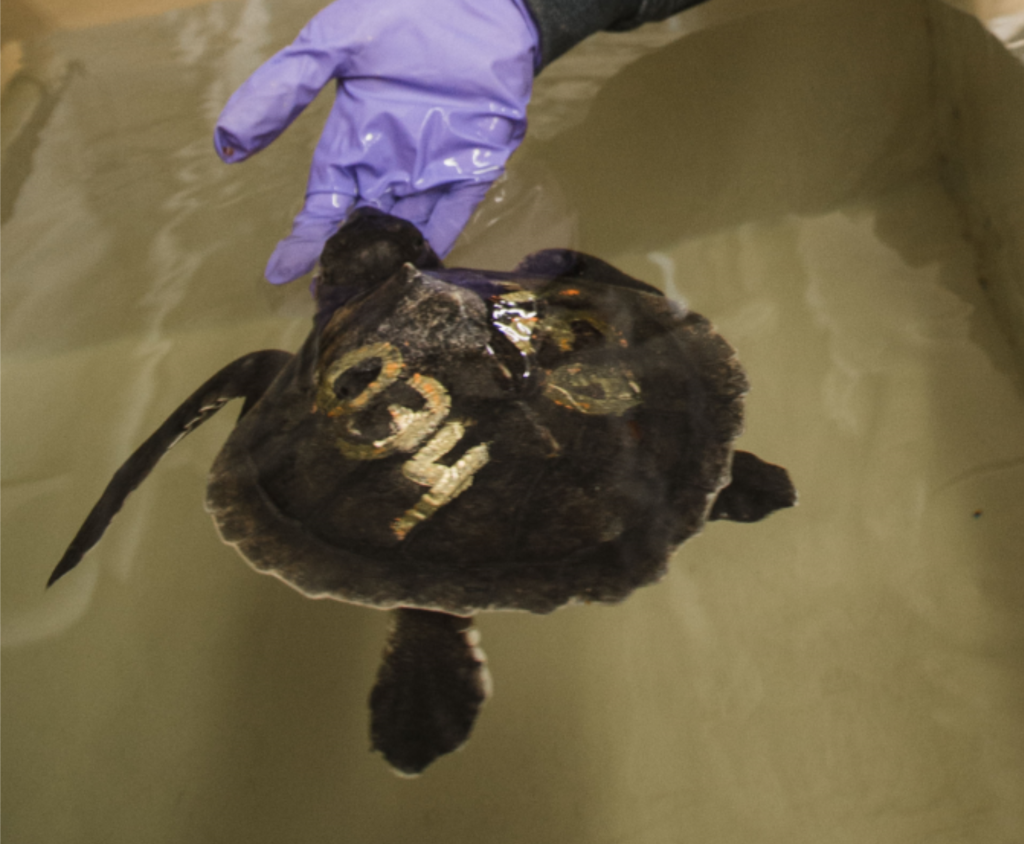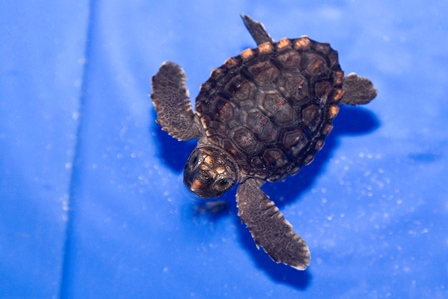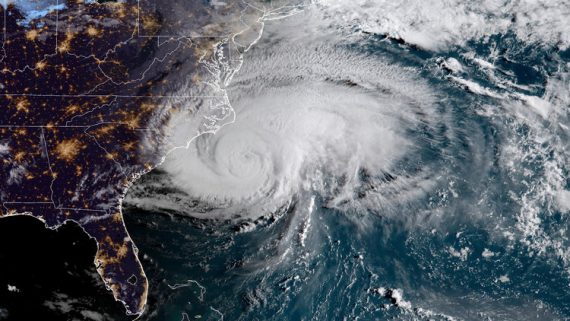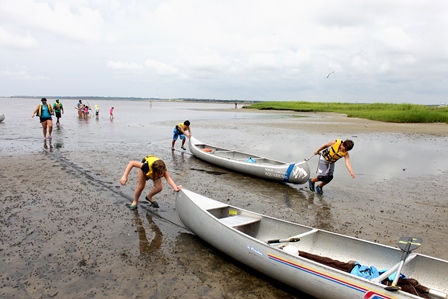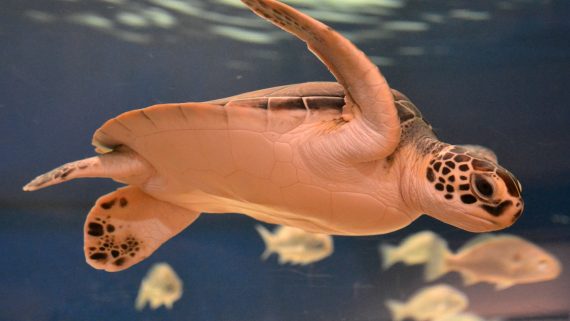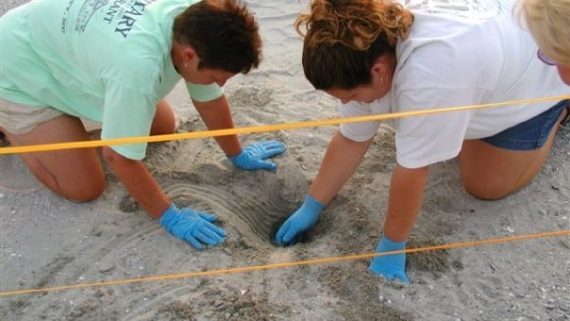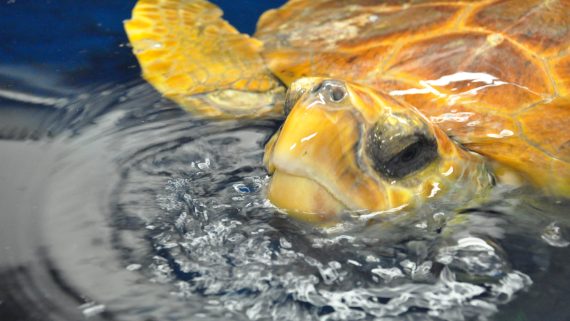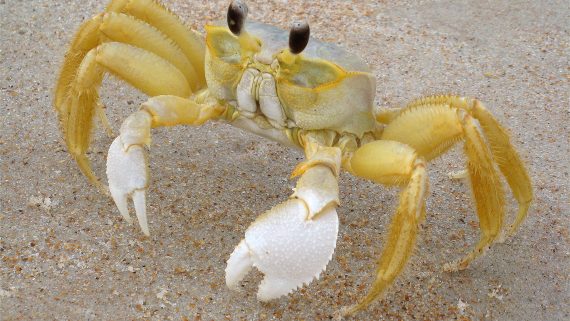The Aquarium Cares for Cold-Stunned Turtles
As the weather turns colder in the winter months, people head indoors or bundle up in appropriate gear. Animals have their own way of dealing with dropping temperatures. Some migrate to warmer weather and more abundant food sources, while some sleep through the cold. Others stay active and go about their business, like sea turtles. However, since they are reptiles, sea turtles cannot control their own body temperatures. The temperature outside their bodies dictates their internal temperature, which is why we see a phenomenon among sea turtles known as cold-stunning.
Cold-stunning can occur when water temperatures drop quickly to below 50 degrees Fahrenheit. Cold-stunned turtles become lethargic, experience decreased circulation and heart rates, and may die if they are in this state for a prolonged period of time. They are also susceptible to respiratory illness, animal attacks, and bacterial and fungal infections.
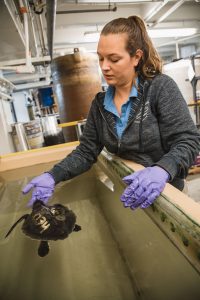
One of the Animal Care Team members with a cold-stunned Kemp’s ridley sea turtle.
The North Carolina Aquarium at Fort Fisher is currently caring for three endangered Kemp’s ridley sea turtles that were injured in a recent cold-stunning event in New England. The Aquarium’s Animal Care Team is providing the turtles with special diets and monitoring them for health complications. The turtles appear to be juveniles based on their weight and size, with none weighing more than 3.5 pounds. Once the animals fully recover they will be released to the warmer waters of the Atlantic Gulf Stream.
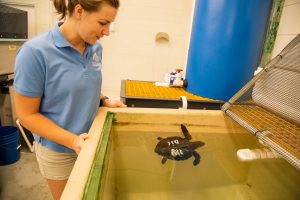
An Aquarium volunteer with a cold-stunned Kemp’s ridley sea turtle.
The sea turtles arrived in North Carolina on Sunday, November 4th from Massachusetts, where they originally stranded due to a sudden drop in water temperatures in late October. They received initial care from the New England Aquarium, including rewarming, fluids, bloodwork and antibiotics. A total of 25 Kemp’s ridleys were flown to North Carolina and transported by North Carolina Wildlife Resources Commission staff to the three North Carolina Aquariums including Fort Fisher, Pine Knoll Shores and Roanoke Island. Fort Fisher received five turtles initially. Two have already recovered and been released.
The Aquarium at Fort Fisher, while not a traditional sea turtle rehabilitation center, collaborates yearly with the N.C. Wildlife Resource Commission, other organizations and aquariums to offer space and resources to care for injured sea turtles.
We are still caring for our two hatchlings as well. Turtle A is now 269.6 grams and 11.8 centimeters while turtle B weighs 259.8 grams and is 11.7 centimeters. To follow along with their progress, look at the table in this post.


